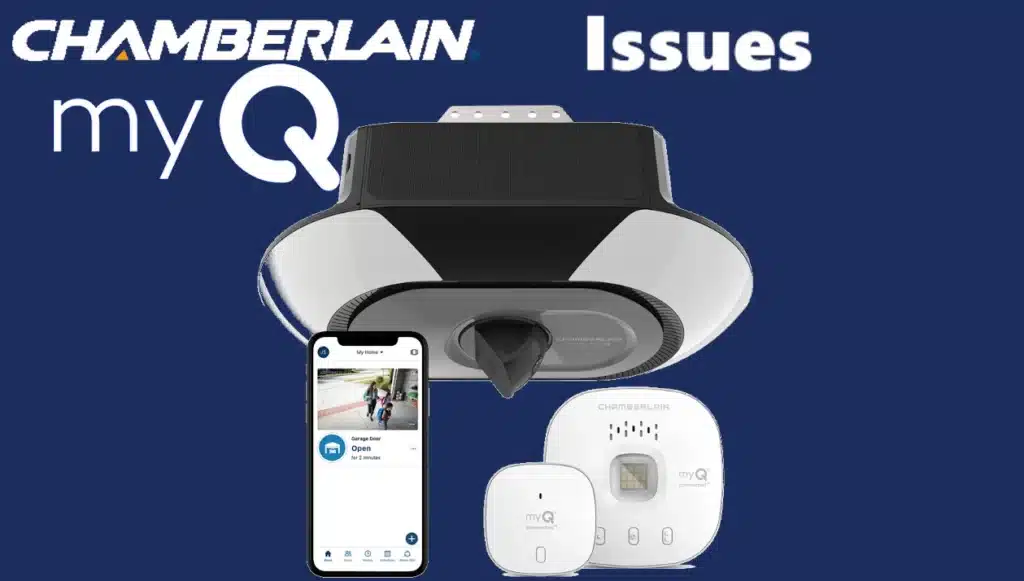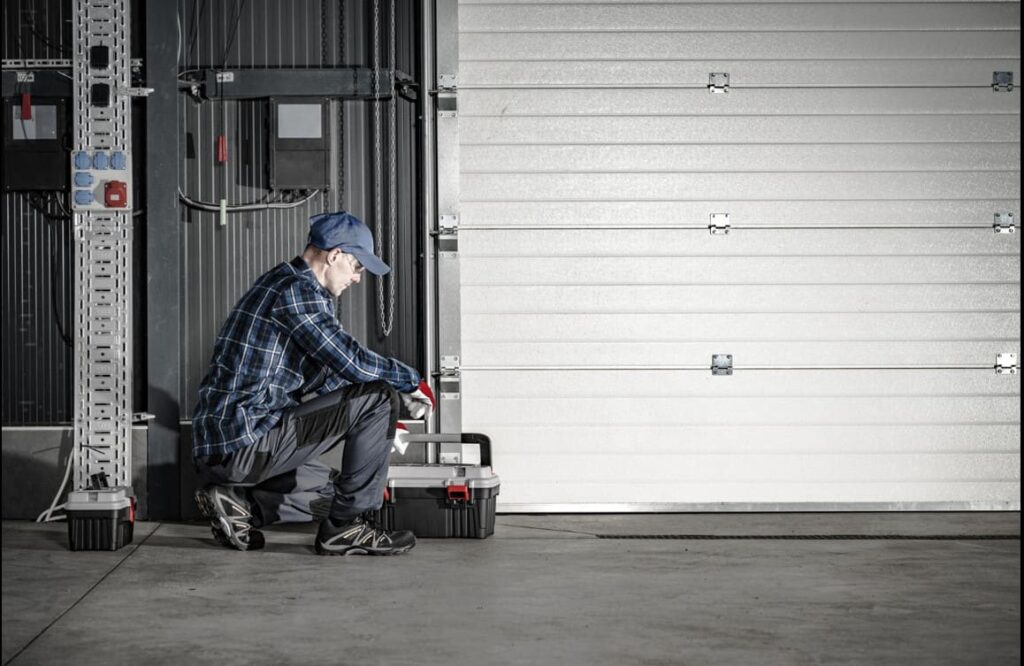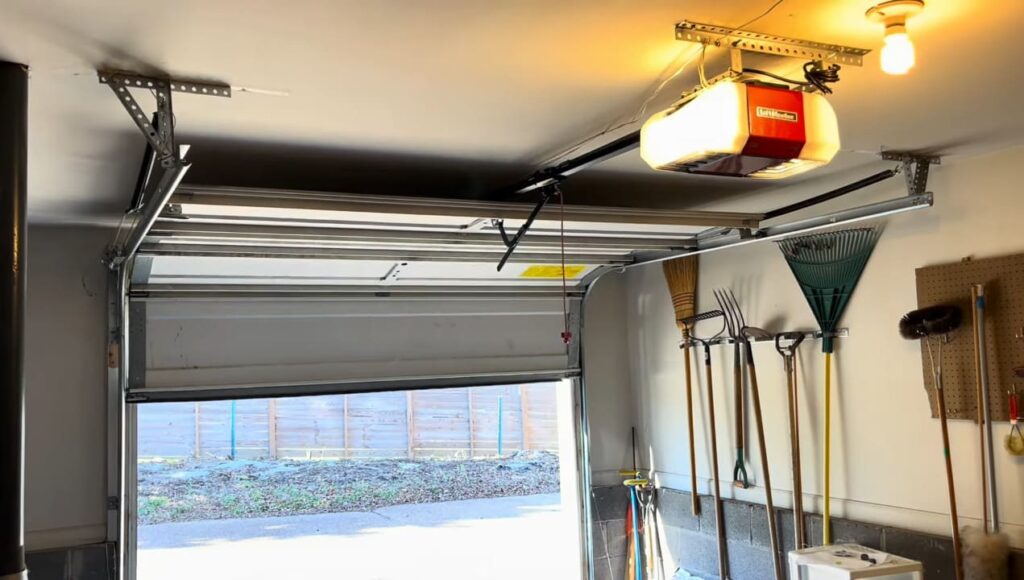Users may encounter a few common issues with myQ smart garage door openers. Here are some typical problems and how to address them:
myQ Opener Not Connecting to Wi-Fi? Here’s What to Do
One of the most frequent issues is the opener failing to connect to the home Wi-Fi or dropping offline. If setup isn’t working, remember that the opener supports only 2.4 GHz Wi-Fi. Ensure your phone is on 2.4 GHz during setup and that your router is broadcasting 2.4 GHz (some mesh systems default to 5 GHz which the opener can’t see). If your router uses a combined SSID for dual-band, you might temporarily disable the 5 GHz or use a guest network for the garage opener. Also check your Wi-Fi signal strength in the garage – if it’s very weak (e.g., one bar), the opener may have trouble communicating.
In that case, consider installing a Wi-Fi range extender or mesh node closer to the garage. Another tip from the community: if the myQ app has trouble during the Wi-Fi setup step, try using the “setup.myqdevice.com” webpage from a mobile browser, or even select “Internet Gateway” in the device list as a workaround – some users found alternate setup methods helped when the standard flow failed. If the opener was connected before but is now offline, you can power cycle it (unplug the opener and plug it back in, or hit the circuit breaker).
Sometimes router reboots help too. Remember that any change to your Wi-Fi name/password will require reconfiguring the opener via the app. Chamberlain’s support suggests that certain firewall or router settings (like blocking UDP port 8883) can prevent the myQ from maintaining cloud connection, though this is uncommon on home routers.
Garage Door Doesn’t Move When Using myQ? Here’s the Fix
If you tap the button in the app and nothing happens (and the device shows offline), it’s likely a connectivity issue (see above). However, if the device is online (status is showing correctly) but the door won’t move, check the following: Is the garage door opener in “Lock” mode? If someone pressed the Lock button on the wall control, it will disable remote operation (which includes the myQ app) – in this case the app’s command might be ignored. The fix is simply to hit the lock button on the wall panel to turn that feature off (usually an LED on the wall button will turn off, indicating normal remote function is restored).
Also, ensure the safety sensors are unobstructed and aligned. If the door’s safety sensors have a blinking light, the door won’t close via remote/app; you’ll typically see the door attempt to close and then reverse. The myQ app might report an error in such a scenario. Clear any debris or realign the sensors until the LEDs are steady.
Another situation: if the door was manually disconnected (via the emergency release cord being pulled), the opener can’t move the door – you’d need to reattach the door to the trolley carriage and then use the app. Essentially, if the app isn’t opening/closing the door, treat it like a remote control not working: check for power to the opener, sensor alignment, lock mode, and that the door isn’t mechanically jammed.
Why Your Garage Door Stops or Reverses When Using myQ?
If your door begins closing via the app and then auto-reverses, or it stops partway, it might be encountering an obstruction or the opener’s force setting might be too low/high. This isn’t a myQ-specific issue but a general opener safety response. Check that the door track is clear and well-lubricated. If it’s an older door, the spring tension might be off, causing the opener to sense it as resistance.
You may need to adjust the down-force setting slightly (consult your manual) or have the door serviced. The myQ app will report the door as “closed” and then “open” again if a reversal happened, which can tip you off that something went wrong. If it was a one-time thing (maybe a rake was in the way), clearing the path solves it.
Fix myQ Notification Problems on Your Phone
If you’re not getting alerts when the door opens/closes, check the app’s notification settings. Ensure notifications are enabled for the device within the myQ app and in your phone’s OS settings. Often, during initial setup the myQ app asks permission to send notifications – if denied, you won’t get alerts. You can go into the myQ app > Menu > Alerts to configure specific alerts (e.g., “Garage open longer than X minutes”).
If those are set but still no alerts, try logging out and back into the app, or reinstalling it. It’s also possible that if multiple people share the same myQ account, only the account owner gets certain alerts (invite your family members via the Guest feature so they can get their own alerts).
Why myQ Doesn’t Work with Alexa or Google Home Anymore ?
A common “issue” reported is users trying to get Alexa or Google Home to work with myQ and failing – as noted in the compatibility section, this is expected because Chamberlain doesn’t support those voice assistants (anymore). If you attempt to find a “Chamberlain” skill on Alexa or add MyQ to Google Home, you’ll hit a dead end. The “solution,” if you will, is to use IFTTT as a bridge or simply use the myQ app interface.
On Google Assistant, Chamberlain used to allow linking for a fee; now it’s removed, so an end-user can’t do much besides complain. This isn’t a fixable bug, but understanding that it’s a deliberate limitation can save time. By contrast, if using a partner integration like Alarm.com or Tesla and it’s not linking, ensure you have the latest instructions from those providers – often you must add the myQ account within that partner’s app or site (for example, in a Tesla account you’d add MyQ under “Garage”). If link failures occur, contacting Chamberlain support or the partner’s support might be necessary since those integrations can be complex.
Chamberlain Battery Backup Problems? Here’s How to Fix Them
If your opener has a battery, a few issues can crop up: beeping sound from the unit, or the door not operating on battery. A beep every 30 seconds usually indicates a low battery. If the power is on but it’s beeping, the battery likely needs replacement (the myQ app may also alert “Battery low” or similar). The backup battery is typically a model 4228 for Chamberlain – easily swapped by opening the compartment.
If the battery is new but the unit still beeps or won’t run on battery, check the battery connections and fuses. Another scenario: after a power outage, the opener might not reconnect to Wi-Fi automatically when power returns (especially if it fully drained the battery). If this happens, you may need to reboot your router or opener. In general, battery backup systems are simple but require maintenance – plan to replace the battery roughly every 3 years.
Chamberlain myQ Service Outage: How to Tell and What to Do?
On rare occasions, Chamberlain’s myQ cloud service can experience downtime or outages (users have noted this on forums and sites like Downdetector). During such an outage, you might find the app not responding or showing the opener as offline even though your local Wi-Fi is fine. Unfortunately, if the myQ service is down, remote features won’t work until it’s resolved, because the system is cloud-dependent.
You can still operate the door with your physical remotes or wall button. If you suspect an outage, you can check websites like downdetector or social media for confirmation. These outages are not common and usually short-lived. Chamberlain’s move to block unofficial integrations in 2023 was partly to reduce strain on their servers, hopefully improving reliability.
Understanding myQ Error Codes and Diagnostic Tools?
If you encounter error codes or blinking LEDs on the unit, refer to the manual’s diagnostics section. For example, 10 flashes of the light bulbs on a Chamberlain typically means the safety sensors are misaligned; 3 flashes might indicate door travel not learned. The user manual and Chamberlain’s support site have charts for these codes. The myQ app’s “Health Report” or Diagnostics (if available for your model) can also show if anything like excessive temperature or motor obstruction was detected.
If problems persist, Chamberlain’s customer support is available via phone and online. They can often walk users through advanced troubleshooting. Many issues can also be solved by consulting the extensive Q&A on Chamberlain’s support site or even community forums (there’s an active subreddit r/myq where users share tips). Common fixes like resetting the opener’s Wi-Fi (holding the yellow learn button until the LED blinks blue) and re-adding to the app, or performing a full factory reset if needed, can resolve stubborn connectivity bugs. Just be prepared to re-teach the travel limits if you do a factory reset.
In summary, the myQ smart openers are generally reliable, but network-related hiccups are the most frequent trouble. By ensuring good Wi-Fi conditions and understanding the safety features (sensor alignment, lock mode), you can avoid most headaches. When issues do arise, a combination of checking the hardware (sensors, power) and the software (app settings, router settings) will cover the bases.



